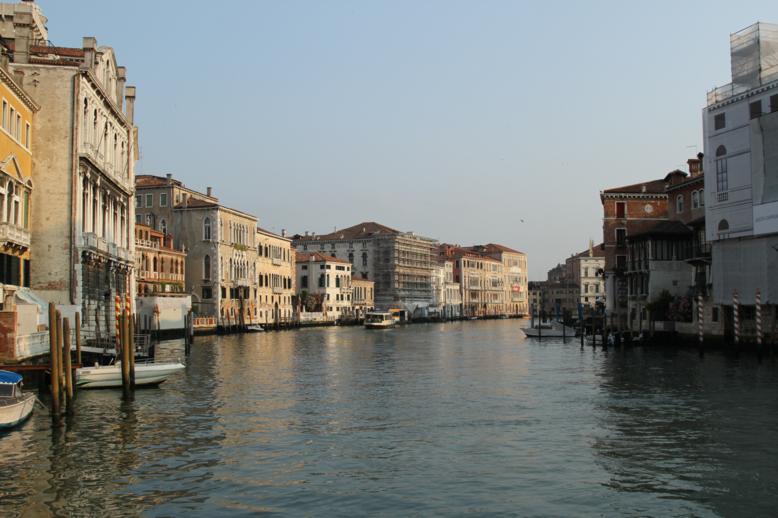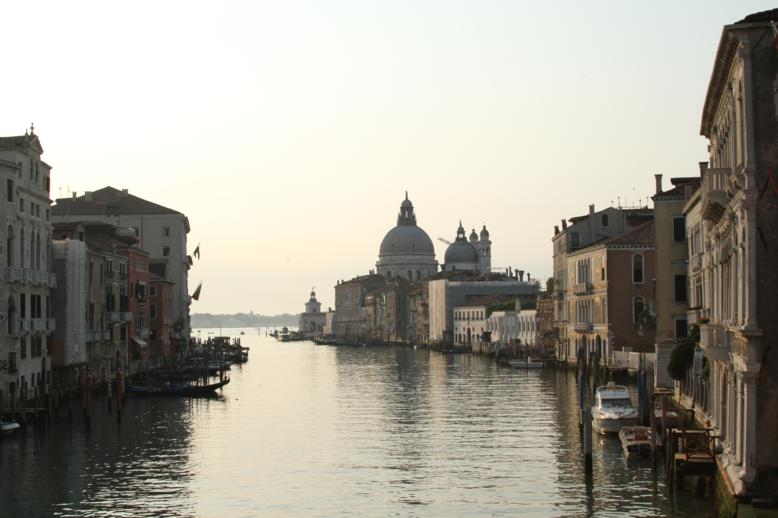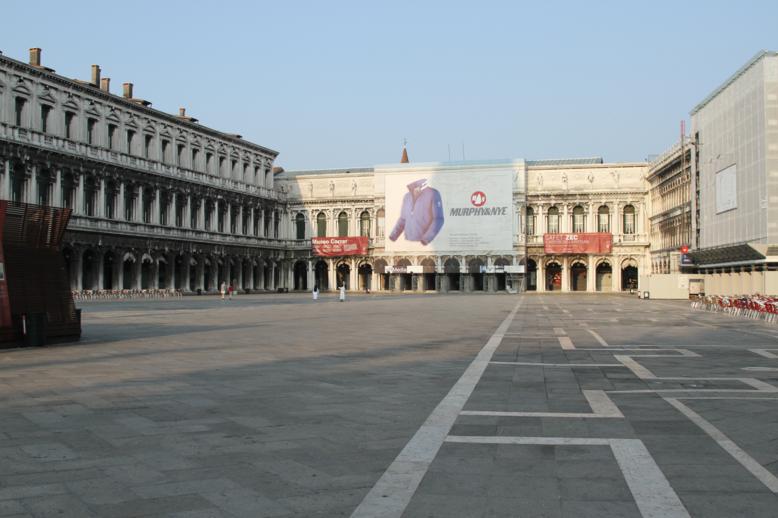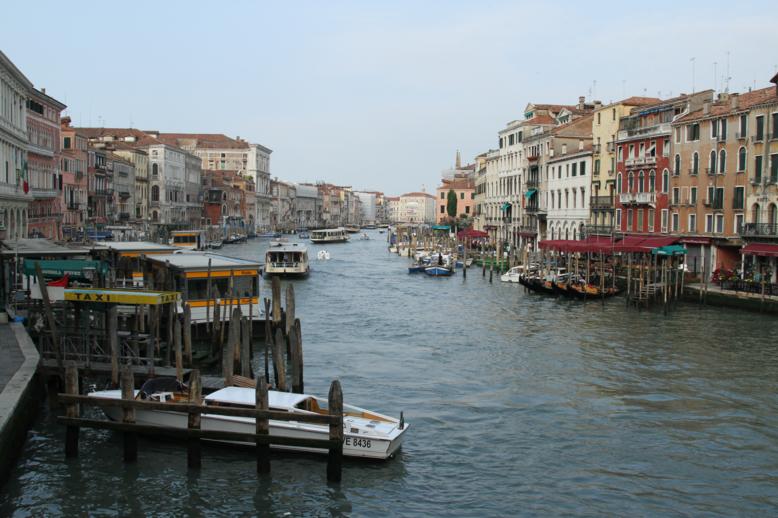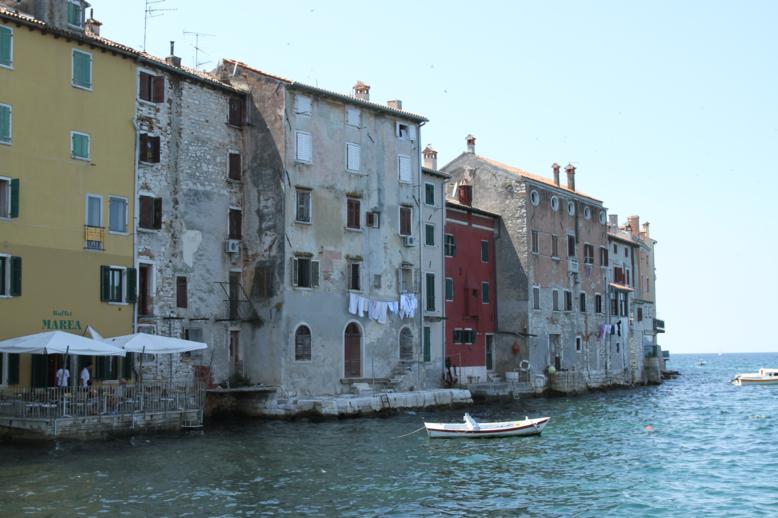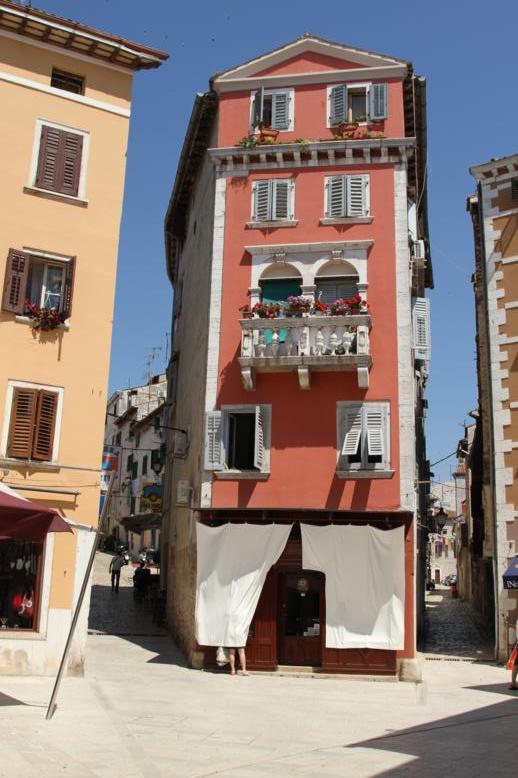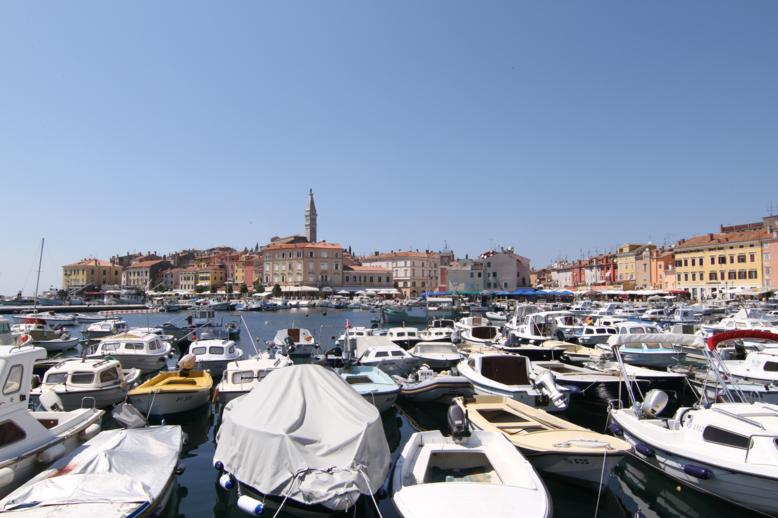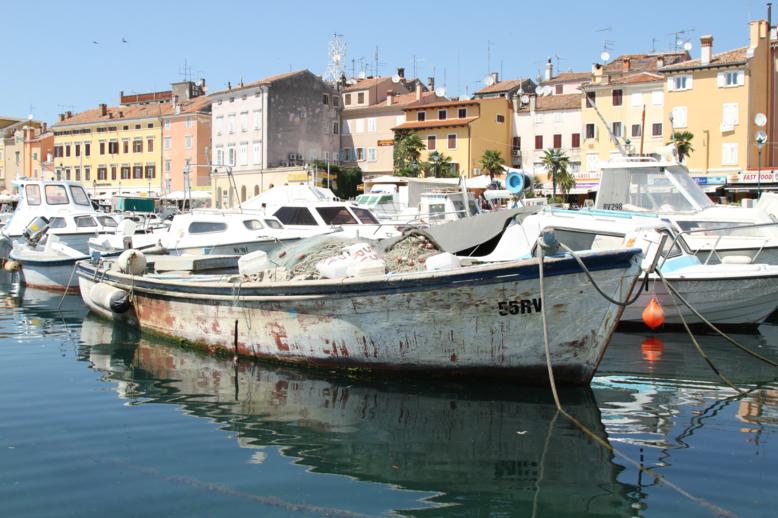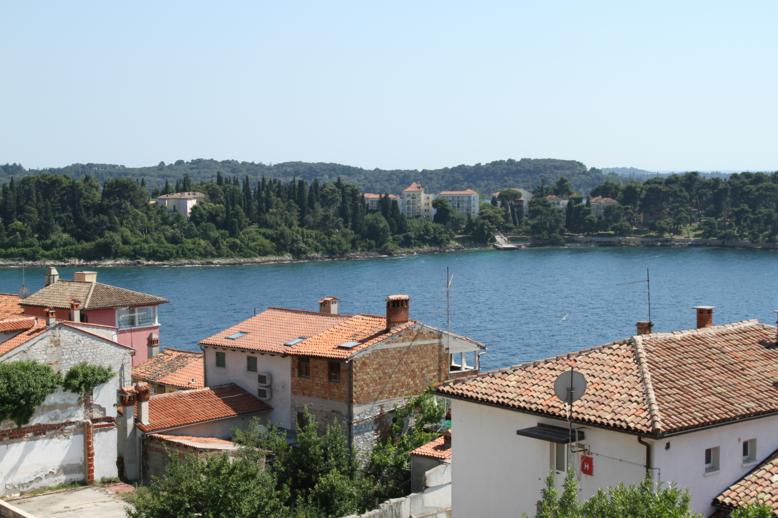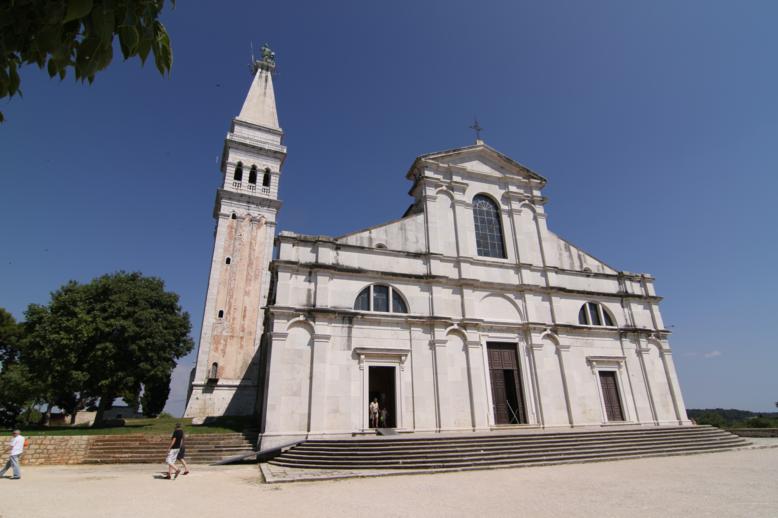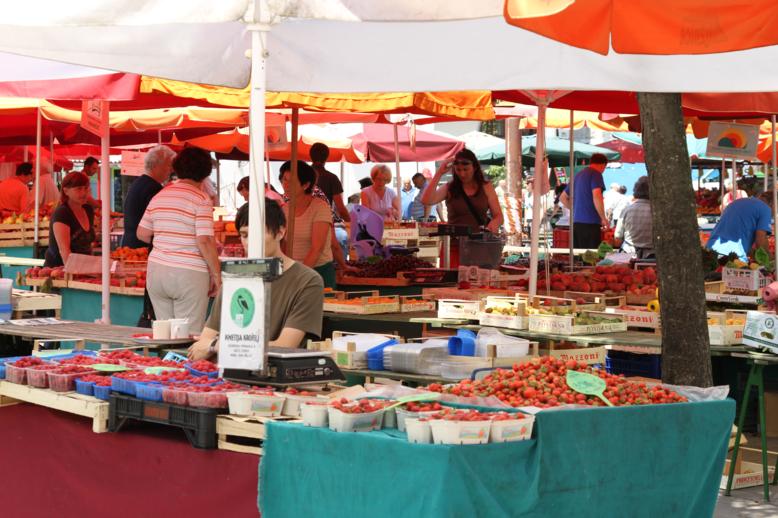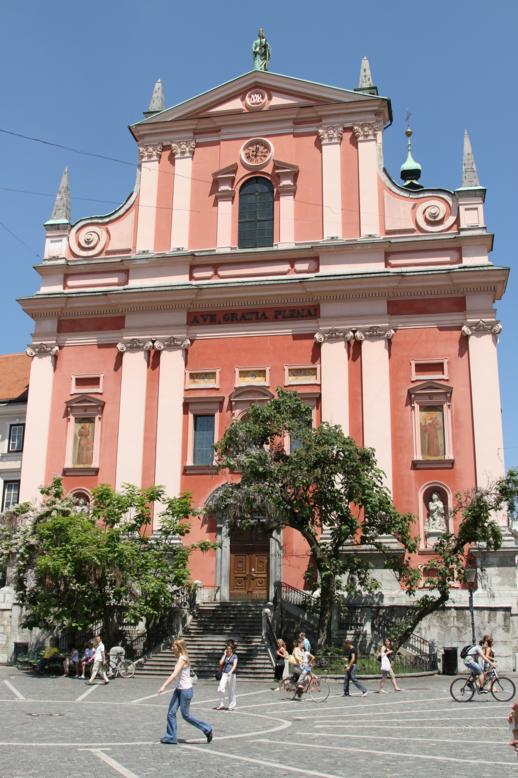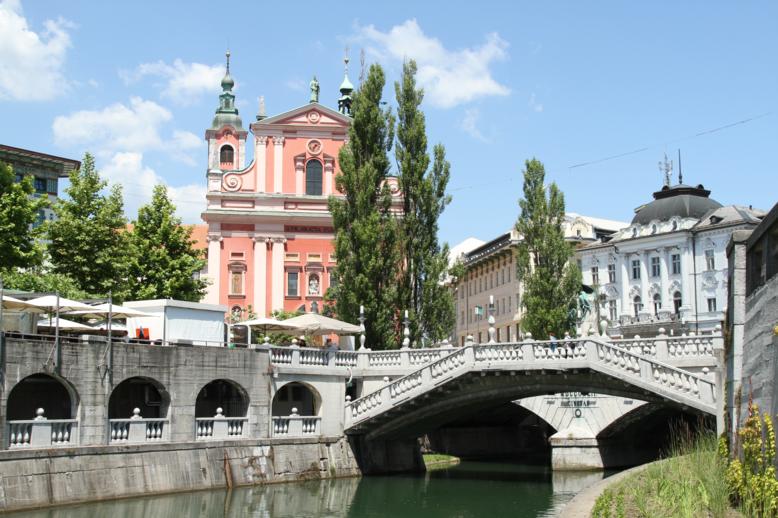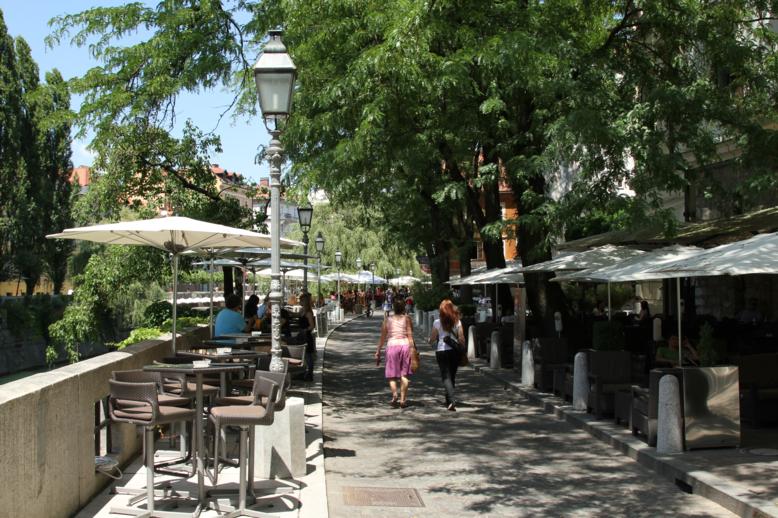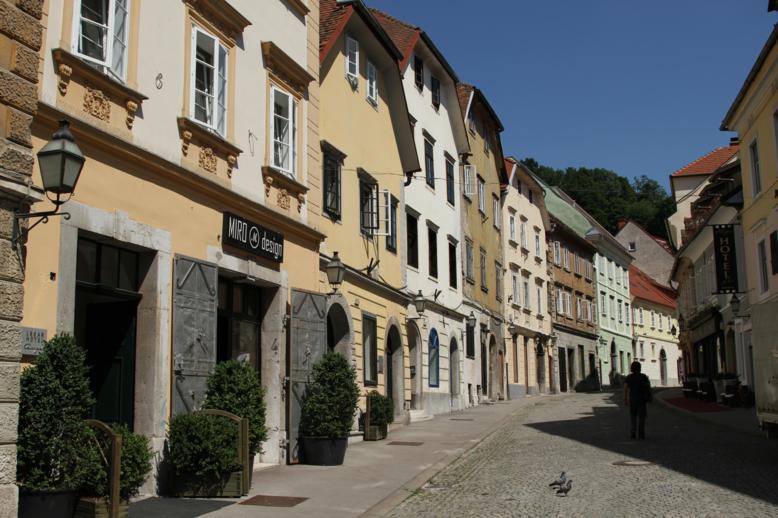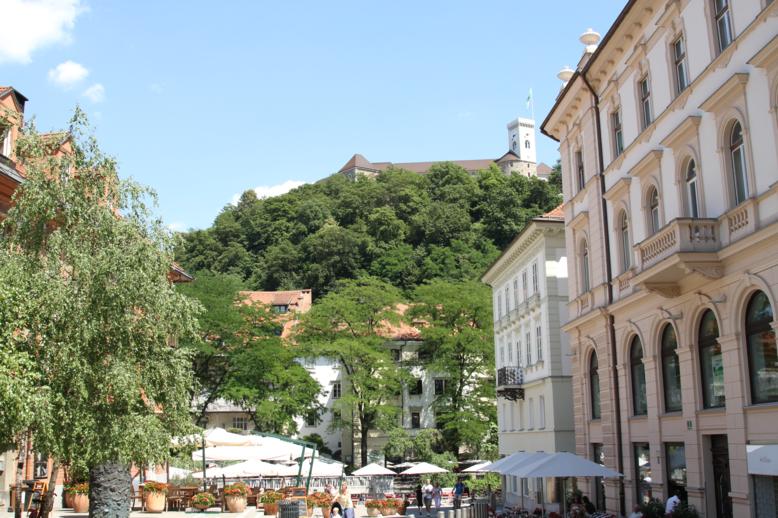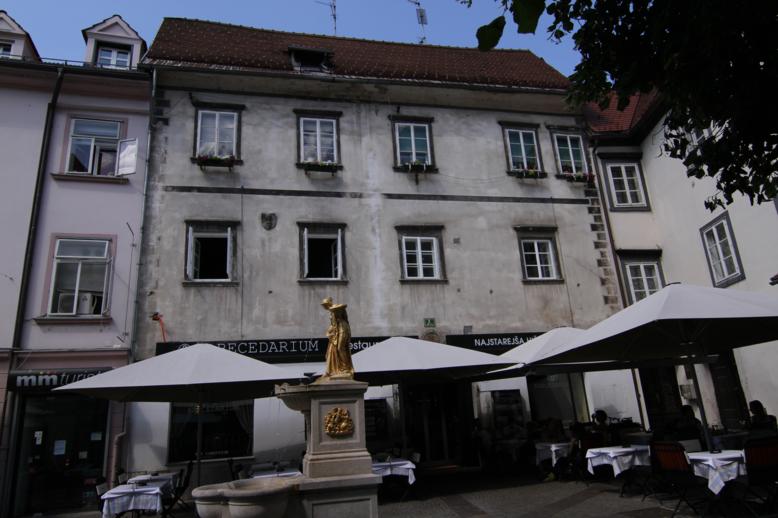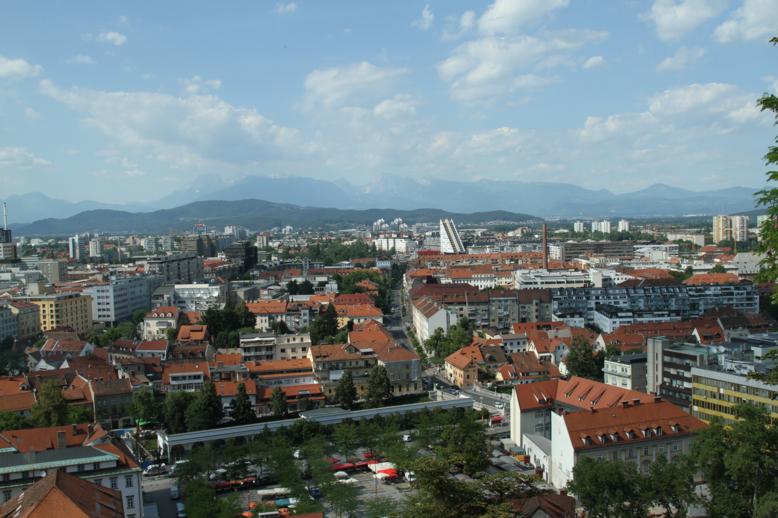|
Europe 2010
Monday
28th. June 2010
We woke soon after 6:00am and I had always thought that it might be a
good photo opportunity. So we ventured out to find Venice almost
deserted. We walked over the Ponte dell'Accademia, passed two nuns in
St. Marks Square and the four of us were the only people there, walked
back over the Ponte di Rialto and back to the hotel.
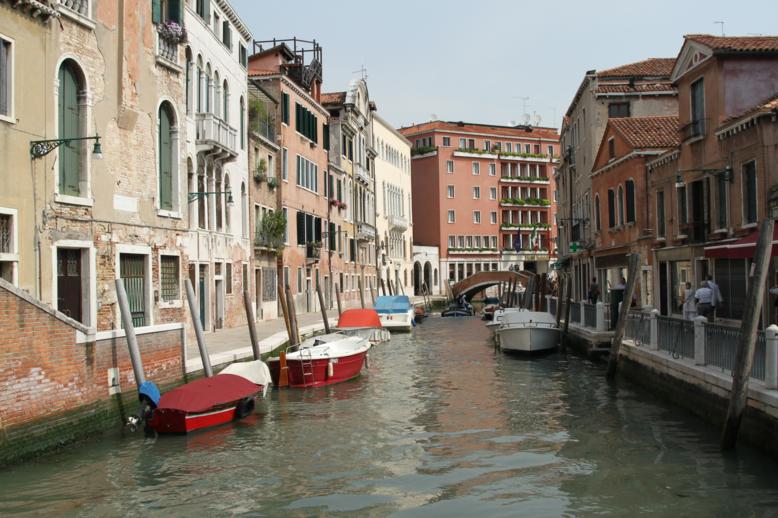
This was totally different to yesterday when the
Square and its surrounds were packed with thousands of people. We made
it back to the hotel just after 8:00am, had a hearty breakfast and then
met Antonia, our guide for the trip for a brief meeting. She is a New
Zealander whose parents were Croatian, and at the age of 21 she decided
to return to her home land and stayed there.
The tour party consists of six people, all Australian, plus Antonia and
the driver Ilya.
Ilya loaded our luggage into the 8 seater Mecedes people mover and we
set off, passing Trieste on our way through Slovenia and into the area
known as Istria and to the town of Rovinj in Croatia. It was humid and the
temperature about 28˚C.
The town was once on an
island but in 1763 the causeway between it and the mainland was
filled in. But one of the old gates (Balbi's Arch) to the walled town
dating back to Venetian times (1680) still stands.
After lunch we climbed the hill up to the St Euphemia Cathedral, which
was rebuilt in 1736. St. Euphemia was persecuted for being a Christian
in Istanbul and fed to the lions. But the lions refused to eat her. So
she was tied to a wheel and had knives thrown at her until she was dead.
She was then placed in a stone sarcophagus and thrown into the sea.
Sometime later the sarcophagus containing her embalmed body washed up on
the shore at Rovinj and she was declared a saint. It all sounds most
improbable, but the faithful believe the story. The bell tower is
modelled on the one in St. mark's Square in Venice
We then drove further south to the city of Pula. This city was also once
walled. We started walking at the Roman "golden" gate.
|
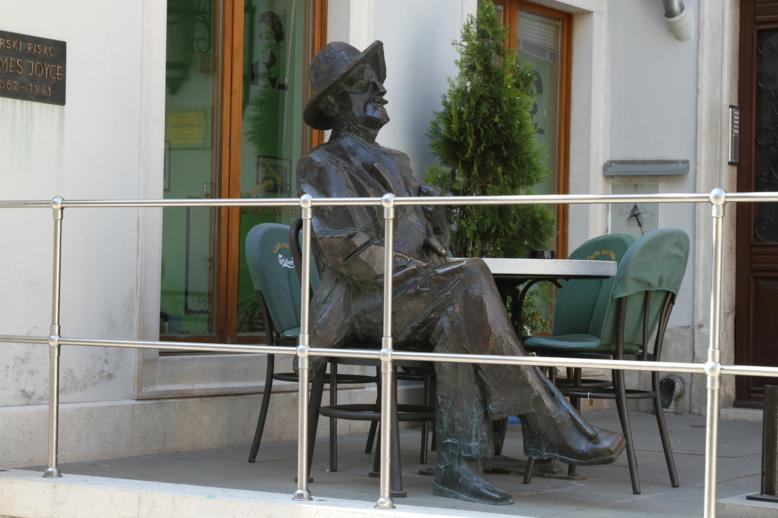
James Joyce statue |
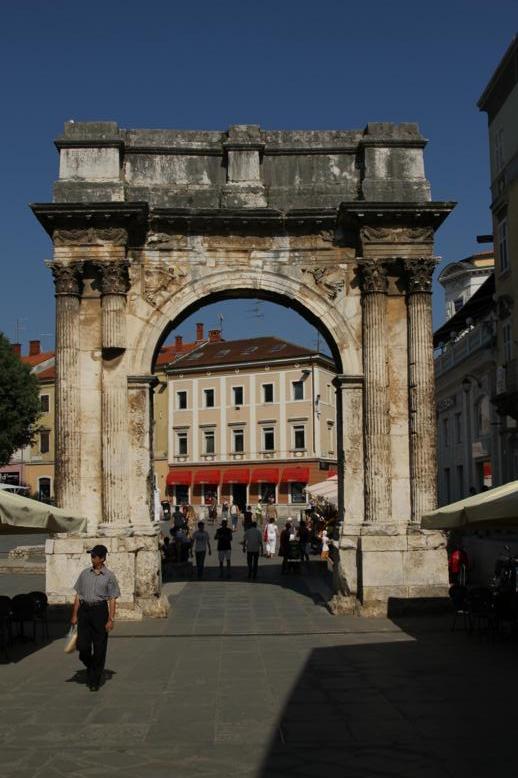 |
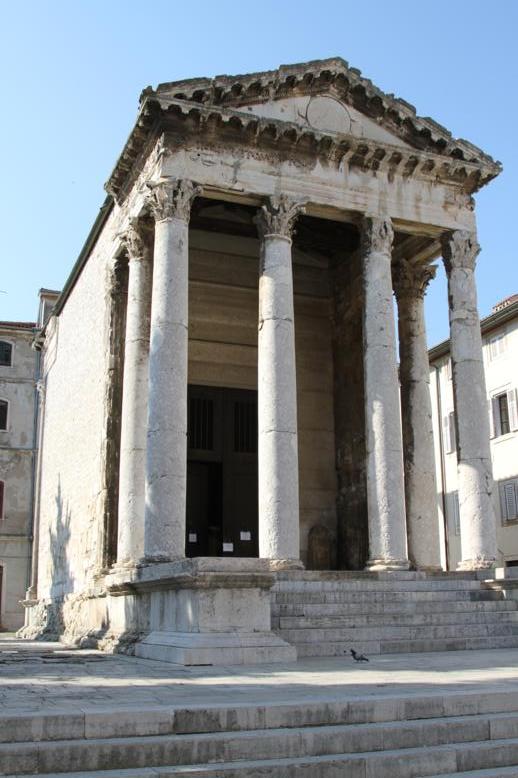 |
|
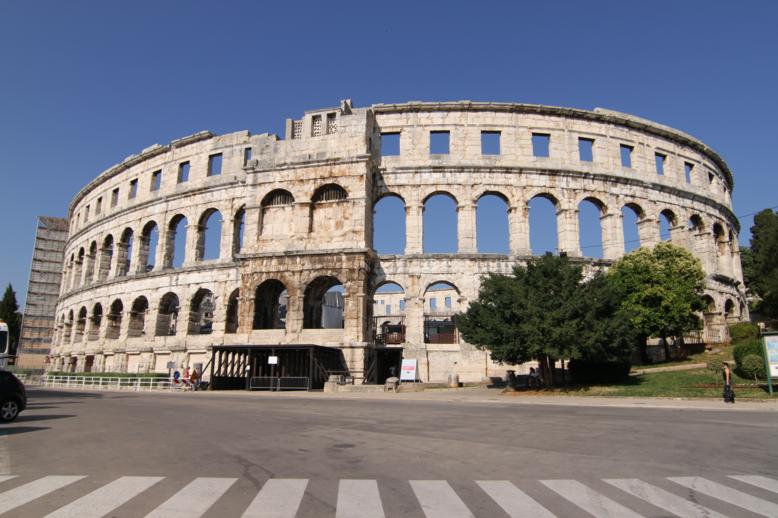 |
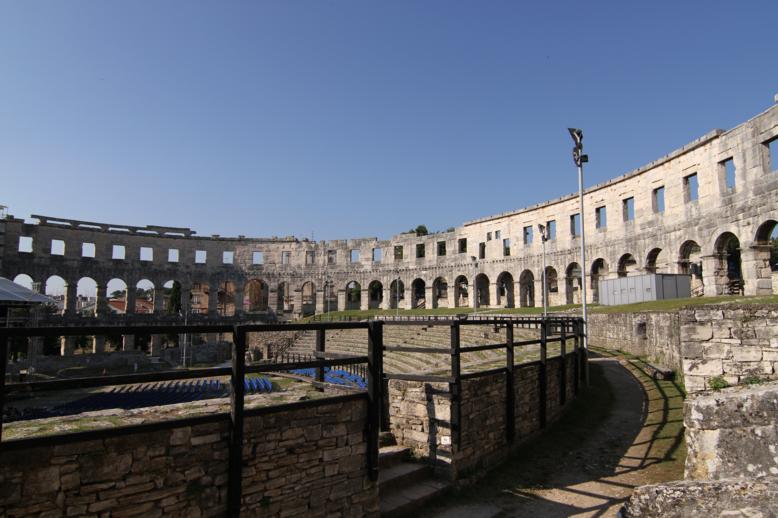
The amphitheatre |
Alongside
the gate is the seated bronze statue of James Joyce who spent time here
in about 1904. We passed the Temple of Augustus, the remains of Diana's
temple which dates back to the first century AD, the basilica which are
all integrated into the medieval town hall. and finally ended up
at the Roman arena. This amphitheatre was built by Claudius and enlarged
by Vespasian in 79 AD for gladiator fights. The amphitheatre could seat
up to 23,000 people. It is now used for opera and rock concerts and
other local productions.
We then drove to Belvedere Hotel had drinks, dinner and went to bed.
Tuesday
29th. June 2010
Today we traveled north for about 4 hours, back into Slovenia
and to the capital city of Ljubljana. Like many cities in the area,
Ljubljana began as a Roman settlement. The original wooden buildings
have been destroyed, and building structures in stone commenced in the
16th. century. The oldest surviving stone building is now one of the
numerous coffee shops.
|




